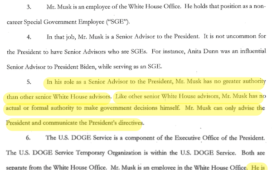The media is in the “If it bleeds, it leads” business. As a result, many pressing social problems and promising initiatives get short shift. Incarcerated populations, such as prisoners and patients of mental health institutions, and the de facto incarcerated, such as the Alzheimers’ wings of nursing homes, wind up being nearly invisible. Yet the US has a prison population of over 1.2 million as of year end 2022. And here we are the clear world leaders. Our jailbirds represent 20% of the world total.
A new story, Inside America’s least probably prison experiment at the Financial Times opens a window into this world and also winds up highlighting the contradictions in US policy towards inmates. The piece is about the charity Puppies Behind Bars. I know Puppies Behind Bars because I gave to it for a few years after its creation in 1997. Originally, it was to train puppies as service dogs for the blind.1 The logic of using prisoners was that they could give the puppies the considerable attention they needed to become good seeing-eye dogs; it’s a 24 hour a day job when done properly. Not all candidates make it even with superb training. And of course a second set of reasons involved the prisoners: they would learn to care for another creature and then give it up when it “graduated.”
The article revolves around how the founder of Puppies Behind Bars, Gloria Stoga, had resolved to bring Puppies Behind Bars to one of the toughest facilities in the US, Green Haven, where half the population is serving life sentences. Puppies Behind Bars has tough standards for screening inmates: they must never have attacked prison staff or tried to escape, must have been free of infractions for a year, and mush not have been charged with sex crimes or violence against children or animals. An earlier story reports they are screened further, among other things, for willingness to handle dog poop and fluids. Oh, and they must have at least three years of prison time remaining.
The Financial Times story does not clearly indicate, as earlier descriptions of Puppies Behind Bars did, that the prisoners who care for these dogs are moved into a separate wing. This was the training model as of 2004, per The Smithsonian:
Two raisers—a primary caretaker and a backup—are assigned to each puppy. The inmates, who live with their pups in a housing unit separate from the general prison population, take the dogs most everywhere, from prison jobs to dental appointments. There’s a six-hour training session once a week. The raisers learn how to teach their charges to climb stairs, come when called and to neither bark nor beg. One inmate, whose pup was destined for a guide dog school in France, learned to give commands in French.
The reason for Stoga being interested in such a hard-core prison population, as the article demonstrates long-form, is training these puppies is very hard and exacting work. Those with long sentences, if they make the grade, can be trainers for many years. So even though, as this article also demonstrates, the failure rate among the Green Haven inmates chosen for the program (so far) is high, the ones that make it will have comparatively long tenures as trainers. And since this seems to be the toughest population Stoga has taken on, presumably she and her fellow Puppies Behind Bars staffers will get better at screening this type of population, and if that proved to be true, at successfully enlisting other maximum security prisons to participate (the article mentions that Puppies Behind Bars has operated in other maximum security facilities but hints that Green Haven is more difficult, for reasons that seem to have to do with more than just its size).
The prison superintendant Mark Miller is a firm backer:
Miller arrived at Green Haven in 2021 determined to bring PBB into the prison. He had heard about a dog that was sent by the programme to help the widow of a fallen police officer. The gesture got to him. “I’m not a bleeding-heart liberal,” he says. “My whole thought was, where are these dogs going, and who are they helping who really needs it?”
There was an operational case as well. Boredom is at the root of much of the worst behaviour in prisons. Miller saw that having programmes such as college in Green Haven kept the men occupied and engaged, and reduced violence, suicides and drug abuse.
In the US, the “internal management” argument that programmes improve the behaviour of prisoners and, therefore, improve the working conditions for staff remains the most politically potent. It is also still considered progressive in a country where many believe violent offenders are not entitled to anything beyond a cell.
Note the article steers clear of a possible additional justification for Puppies Behind Bars, that of rehabilitation. The older Smithsonian story dwells on the fact that the small number of inmates as trainers neverhteless had a disproportionate effect on the entire facility:
Since November 1998, Jim Hayden has watched the puppies work their magic at Fishkill Correctional Facility, a prison that houses 1,750 men in Beacon, New York. Though only 25 of the inmates are raisers, “the dogs have had a calming, humanizing effect on the entire staff, me included,” says Hayden, who is assistant deputy superintendent of programs. “They’ve broken these inmates down, taken their hard shells and cracked them open. Their level of love for and commitment to these dogs is something I never expected to see.”
A 20-month analysis sponsored by the pet food company Iams, which donates food for PBB, supports Hayden’s observations. Prisoners who raised puppies reported greater overall well-being than a group of inmates who hadn’t worked with the dogs. The PBB inmates proved more compassionate and responsible, and believed they could turn their lives around.
Tony Garcia, 42, raised four PBB dogs before being released from Fishkill last January after serving 16 years for armed robbery. He now supports a wife and four children by painting apartments and has applied for a full-time job as a case worker for an organization that aids ex-convicts. “The patience and hope I have, and my willingness to work hard,” says Garcia, “I got from being in that program.”
Jake Charest, 27, who is serving his ninth year of a 7-to-21- year sentence for attempted murder, is raising his second dog, Skip. “All of us in the program are sorry for what we’ve done, but instead of just saying it, which is easy, we’re showing it,” he says. “These dogs make time here almost bearable.”
The Smithsonian does point out that the Puppies Behind Bars program did not reduce recidivism….at Fishkill overall, which given the small number of participants, seems like a wildly unreasonable expectation.
Your humble blogger must confess to having perilous little knowledge of this world. I can count the number of people I know personally who went to prison on one hand and have fingers left over. Two were very well off, one pretty well off, so all three came out not needing to worry about not having enough money to pay for shelter, food and transportation. Only one had a history of violence: an absolutely terrific all around workman who I hired for many odd tasks as I was getting my mother’s house ready for sale. He had a very bad temper (which I never saw), was prone to bar fights, and didn’t mind being in jail.
Given that American prisons are not in the business of rehabilitation, it is not hard to see why so many wind up back in the slammer after release. Even the ones who don’t have sociopathic tendencies are likely to find it difficult to settle into a normal life, particularly the finding regular paid work part. If they were in or on the periphery of gangs or drug dealing, it’s not hard to see them falling back into it even if they had resolved not to, if they are finding it hard to earn income the law abiding way.
I urge you to read this piece in full. It is beautifully written and the author has clearly wrestled with the purpose of punishment and whether rehabilitation and redemption are possible. For instance:
Being in prison skews your convictions, like trying to see something clearly through water. I’ll never know the truth of these men. But I have come to believe that no one is only equal to the worst thing they’ve ever done. No one is as good as the best thing they’ve done, either. This is something dogs never need to be taught.
_____
1 I have to confess I stopped donating after I returned from Australia. This story does not go far enough back in time to cover the shift in mission from dogs for the blind to dogs for vets and law-enforcement related roles. But it isn’t hard to infer from the author mentioning that a lot of prison wardens and the guards themselves resenting the program as giving criminals the opportunity to play with dogs, and thus opposing it, that Stoga found it necessary to appeal to the gatekeepers by training dogs for roles that were seen as serving the broader police community.













